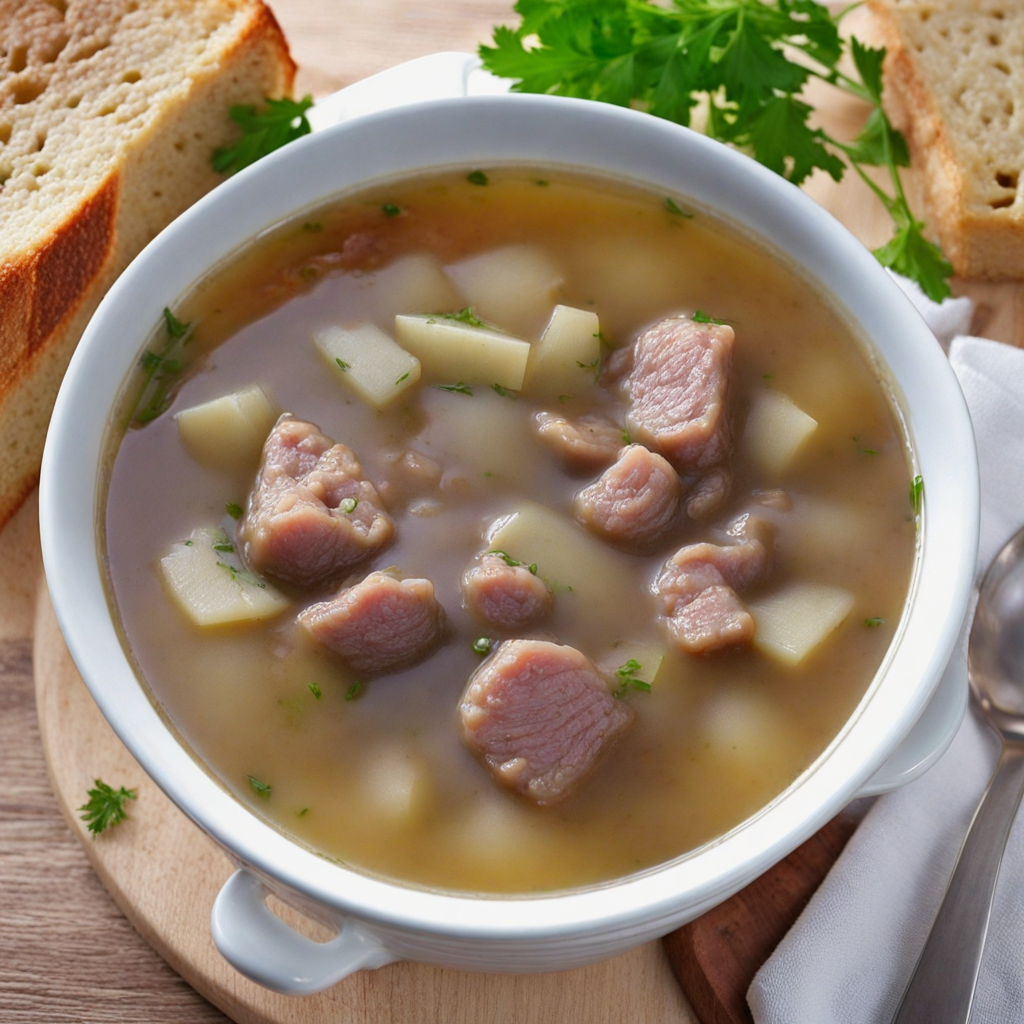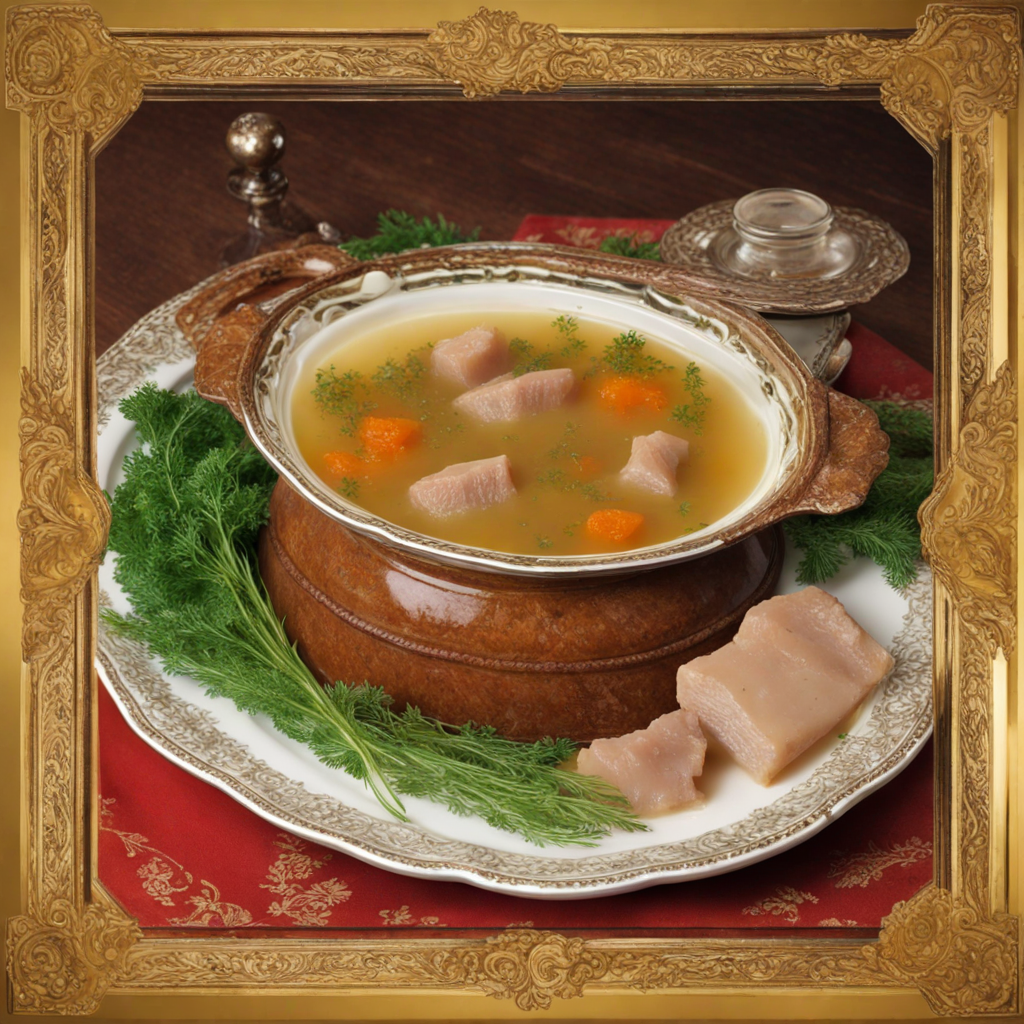Medovik
Medovik, often referred to as honey cake, is a traditional Russian dessert that captivates with its rich flavors and delicate texture. This multi-layered cake is crafted from a blend of honey-infused sponge layers, which are sweetened to perfection, giving it a warm and inviting aroma. Each layer is typically light and airy, yet substantial enough to hold the cake's structure, creating a delightful contrast to its creamy filling. The honey not only adds sweetness but also imparts a unique floral essence, making each bite an experience to remember. What sets Medovik apart is its luscious cream filling, which is usually made from a combination of sour cream and condensed milk, resulting in a smooth and slightly tangy flavor profile that beautifully balances the sweetness of the cake. The cream is generously spread between the layers, allowing the cake to develop a harmonious blend of flavors as it sits, with the layers absorbing moisture and creating a more cohesive taste. Often, Medovik is adorned with crushed nuts or cookie crumbs on the top and sides, adding a delightful crunch that complements its soft, creamy interior. As you savor Medovik, you will discover a symphony of textures and tastes, from the light and fluffy cake layers to the rich and creamy filling. It's a dessert that embodies the essence of Russian hospitality, often served during celebrations and gatherings. Whether enjoyed with a cup of tea or coffee, Medovik invites you to indulge in its sweet, complex flavors, making it a must-try for anyone looking to explore the delightful world of Russian cuisine.
How It Became This Dish
The Sweet Legacy of Медовик: A Journey Through Russian History Mедовик, or "Honey Cake," is a beloved dessert in Russian cuisine, renowned for its rich flavor and layered structure. This cake, characterized by its honey-infused sponge layers and creamy filling, is more than just a sweet treat; it encapsulates a tapestry of history, culture, and tradition that has evolved over centuries. #### Origins The origins of Медовик trace back to ancient Slavic traditions where honey was a staple ingredient. Honey was not merely a sweetener but also held a sacred significance in Slavic cultures as a symbol of prosperity and fertility. The earliest references to honey cakes can be found in medieval texts, where honey was used in various forms of bread and pastries. The first mention of a cake resembling Медовик appears in Russian literature from the 17th century; however, it is believed that variations of honey cakes existed even earlier. The original recipes were simple, often incorporating honey, flour, and water, and were baked for special occasions, celebrations, and religious holidays. As Russia transitioned through different historical phases, so too did its culinary practices. The adoption of new ingredients and techniques influenced the evolution of Медовик, particularly during the 18th and 19th centuries when Western culinary practices began to permeate Russian kitchens. This period saw the introduction of butter, eggs, and cream into recipes, leading to the layered structure of the cake that we recognize today. #### Cultural Significance Mедовик is more than just a dessert; it is deeply woven into the fabric of Russian hospitality and traditions. Traditionally, honey cakes were served during weddings, birthdays, and festive gatherings, symbolizing sweetness and good fortune for the couple or the celebrant. The act of sharing a slice of Медовик is a gesture of goodwill, embodying the warmth and kindness of Russian hospitality. Moreover, honey has long been associated with health and longevity in Russian folklore. It was believed that consuming honey could ward off illness and bring about a long, prosperous life. This cultural belief further enhanced the significance of Медовик, as families would prepare it not just for celebrations but also as a symbol of care and affection for loved ones. #### Development Over Time As Russian society modernized, so too did the recipes for Медовик. By the late 19th and early 20th centuries, the cake had become a staple in bakeries across Russia, with various regional adaptations emerging. The classic recipe typically includes layers of honey-infused dough, often combined with sour cream or condensed milk for the filling. During the Soviet era, Медовик became a symbol of home-cooked comfort food, often made by mothers and grandmothers who took pride in their baking skills. The cake's accessibility, both in terms of ingredients and preparation, made it a popular choice among families. It was common for families to gather around the kitchen table during the long winter months to bake and enjoy this delightful treat together. In the post-Soviet era, as Russia opened its doors to the world, culinary influences from different cultures began to shape the preparation of Медовик. Chefs experimented with flavors and textures, incorporating ingredients like chocolate, nuts, and exotic spices, all while maintaining the essential identity of the cake. This fusion of flavors reflects the dynamic nature of Russian cuisine, which has always embraced innovation while honoring tradition. #### Modern-Day Медовик Today, Медовик enjoys a renaissance, celebrated not only in Russia but also among the Russian diaspora around the world. It has found its way into cafes, restaurants, and homes, often served alongside tea or coffee. The cake is frequently garnished with crushed walnuts, chocolate shavings, or fresh fruits, elevating its presentation and taste profile. In contemporary Russian cuisine, there is also a growing emphasis on organic and locally sourced ingredients. Many bakers are returning to traditional methods, using raw honey and unrefined flour to create a more authentic version of this cherished cake. This trend reflects a broader cultural movement towards sustainability and a return to roots, resonating with those who seek to preserve culinary heritage. Furthermore, the digital age has allowed for a resurgence of interest in traditional recipes, with food bloggers and social media influencers showcasing their variations of Медовик. These platforms have created a vibrant community of home bakers who share tips, tricks, and personal stories associated with this cake, ensuring that its legacy continues to thrive. #### Conclusion Mедовик is a testament to the rich culinary history of Russia, embodying the spirit of resilience, innovation, and community. From its humble beginnings as a simple honey cake to its status as a symbol of Russian hospitality, Медовик has undergone a remarkable transformation while remaining true to its roots. As it continues to be embraced by new generations, this cake tells a story of cultural significance and personal connection, proving that food is not just about sustenance but also about heritage, love, and shared experiences. Whether enjoyed at a festive gathering or a quiet moment at home, Медовик remains a sweet reminder of the past, present, and future of Russian cuisine.
You may like
Discover local flavors from Russia







